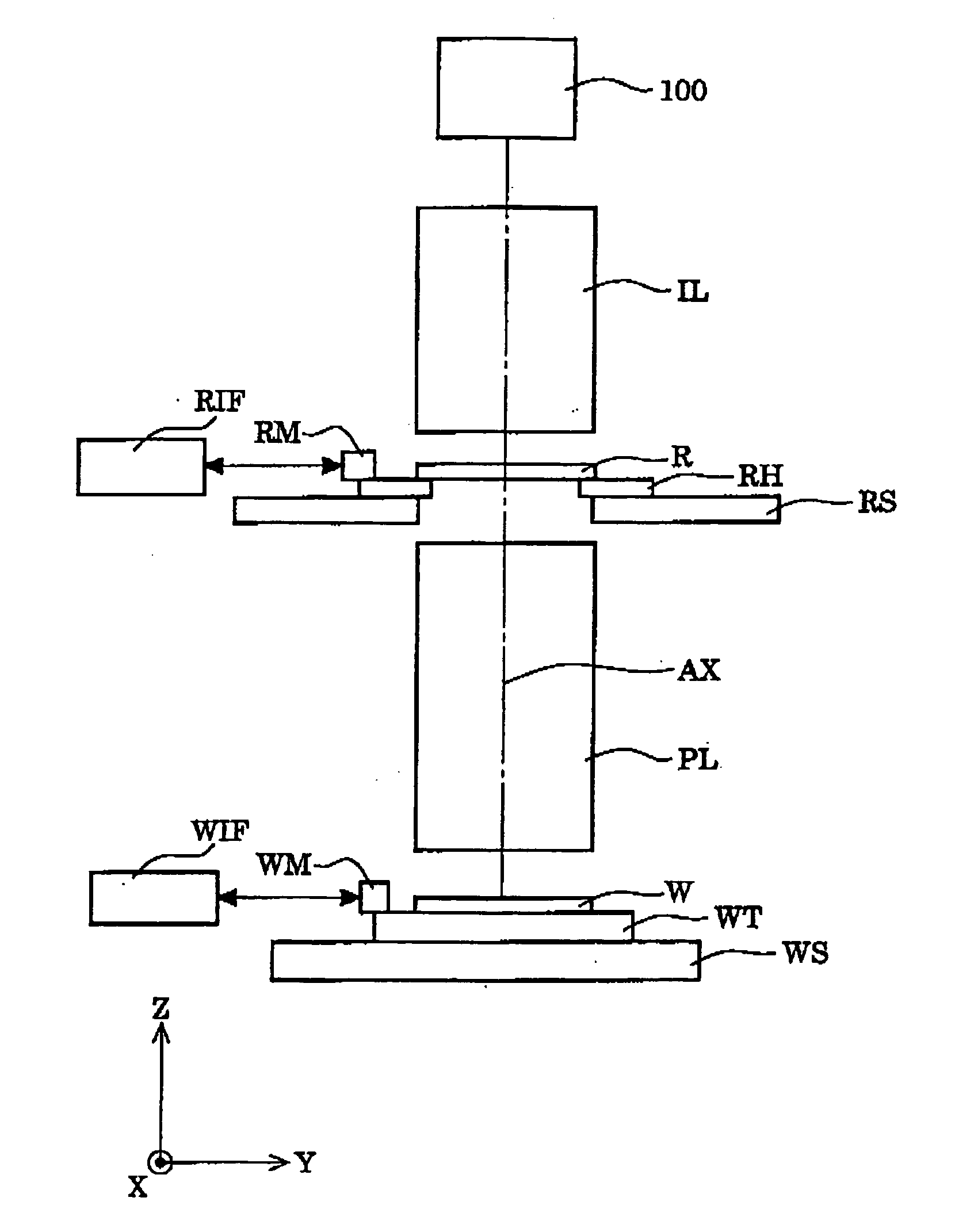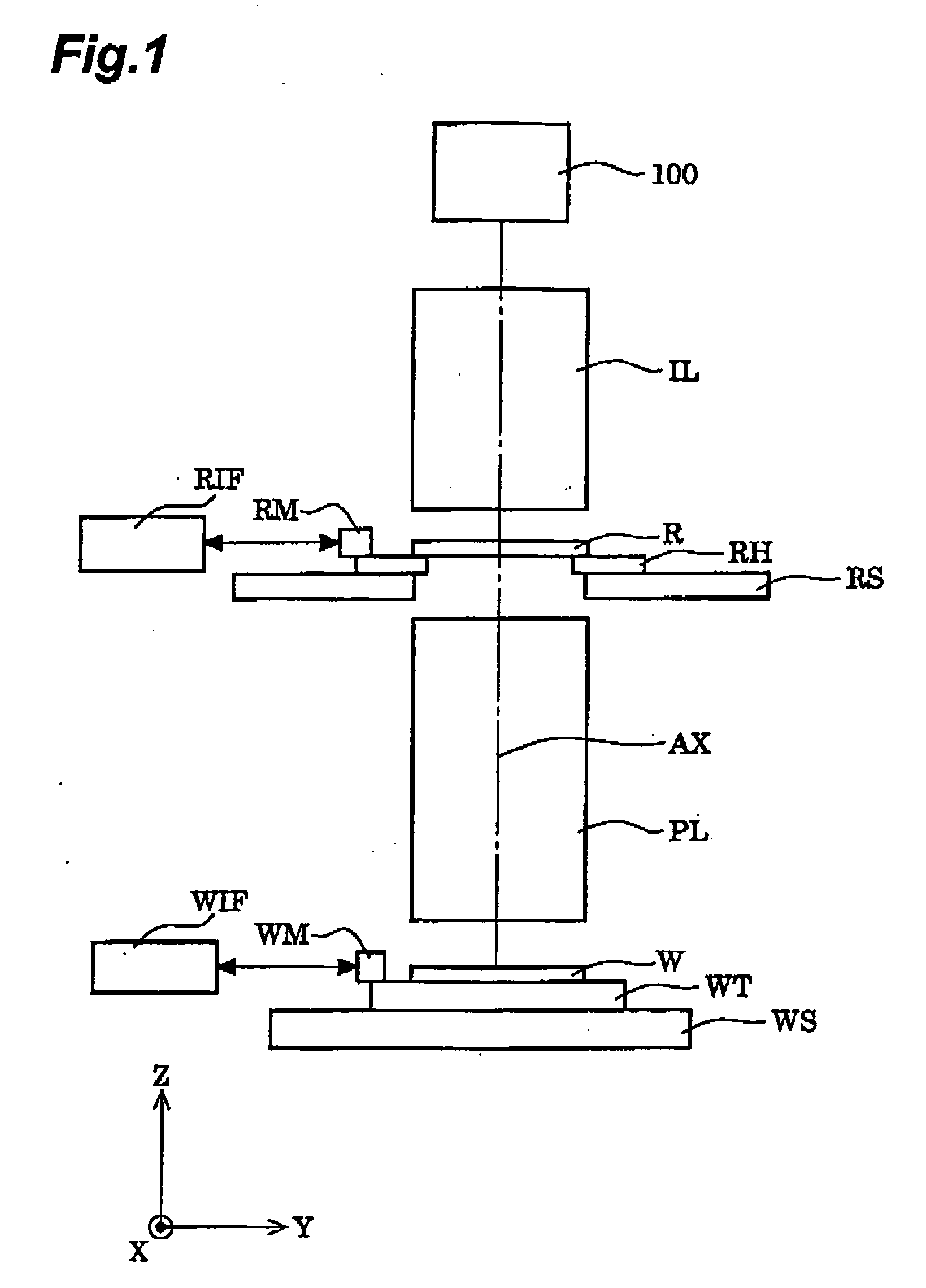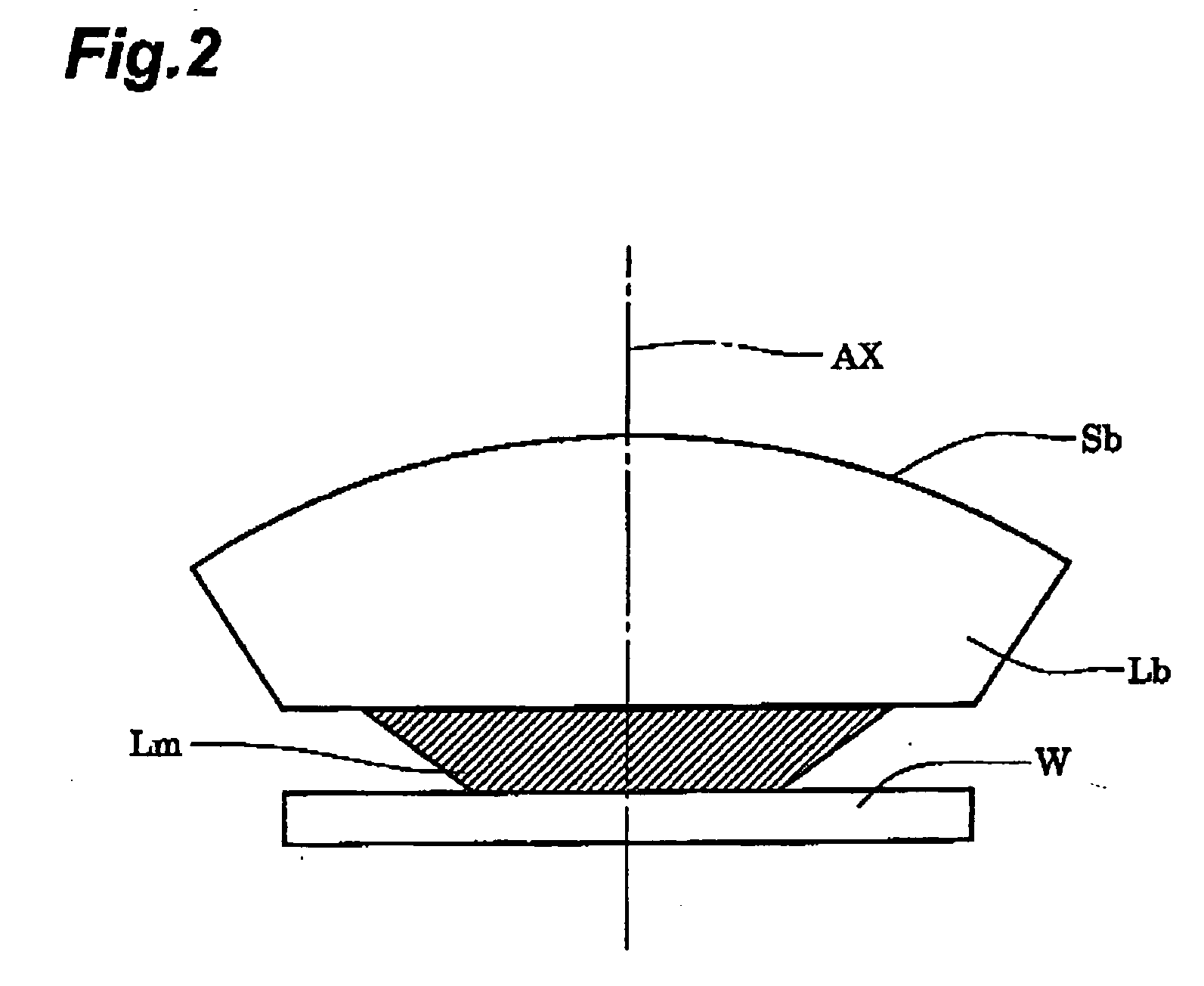Projection optical system, exposure apparatus, and exposure method
a technology of projection optical system and exposure apparatus, which is applied in the direction of microlithography exposure apparatus, printers, instruments, etc., can solve the problems of inability to secure a large effective image-side numerical aperture, inability to accurately correct, and increased reflection loss on optical surfaces
- Summary
- Abstract
- Description
- Claims
- Application Information
AI Technical Summary
Benefits of technology
Problems solved by technology
Method used
Image
Examples
first example
[0099]FIG. 3 is an illustration showing a lens configuration of a projection optical system according to the first example of the present embodiment. With reference to FIG. 3, the projection optical system PL of the first example is composed of the following components arranged in order from the reticle side: a biconcave lens L1 whose concave surface of aspherical shape is kept toward the wafer; a negative meniscus lens L2 whose concave surface is kept toward the reticle; a positive meniscus lens L3 whose concave surface of aspherical shape is kept toward the reticle; a biconvex lens L4; a biconvex lens L5 whose convex surface of aspherical shape is kept toward the reticle; a positive meniscus lens L6 whose convex surface of aspherical shape is kept toward the reticle; a positive meniscus lens L7 whose concave surface of aspherical shape is kept toward the wafer; a negative meniscus lens L8 whose convex surface is kept toward the reticle; a biconcave lens L9 whose concave surface of...
second example
[0106]FIG. 6 is an illustration showing a lens configuration of a projection optical system according to the second example of the present embodiment. With reference to FIG. 6, the projection optical system PL of the second example is composed of the following components arranged in order from the reticle side: a biconcave lens L1 whose concave surface of aspherical shape is kept toward the wafer, a negative meniscus lens L2 whose concave surface is kept toward the reticle; a negative meniscus lens L3 whose concave surface of aspherical shape is kept toward the reticle; a positive meniscus lens L4 whose concave surface is kept toward the reticle; a biconvex lens L5; a biconvex lens L6; a positive meniscus lens L7 whose convex surface is kept toward the reticle; a negative meniscus lens L8 whose convex surface is kept toward the reticle; a biconcave lens L9; a biconcave lens L10 whose concave surface of aspherical shape is kept toward the reticle; a negative meniscus lens L11 whose c...
third example
[0112]FIG. 9 is an illustration showing a lens configuration of a projection optical system according to the third example of the present embodiment. With reference to FIG. 9, the projection optical system PL of the third example is composed of the following components arranged in order from the reticle side: a biconcave lens L1 whose concave surface of aspherical shape is kept toward the wafer; a negative meniscus lens L2 whose concave surface is kept toward the reticle; a positive meniscus lens L3 whose concave surface of aspherical shape is kept toward the reticle; a positive meniscus lens L4 whose concave surface is kept toward the reticle; a biconvex lens L5; a positive meniscus lens L6 whose convex surface is kept toward the reticle; a positive meniscus lens L7 whose convex surface is kept toward the reticle; a positive meniscus lens L8 whose convex surface is kept toward the reticle; a negative meniscus lens L9 whose convex surface is kept toward the reticle; a biconcave lens...
PUM
| Property | Measurement | Unit |
|---|---|---|
| refractive index | aaaaa | aaaaa |
| refractive index | aaaaa | aaaaa |
| size | aaaaa | aaaaa |
Abstract
Description
Claims
Application Information
 Login to View More
Login to View More - R&D
- Intellectual Property
- Life Sciences
- Materials
- Tech Scout
- Unparalleled Data Quality
- Higher Quality Content
- 60% Fewer Hallucinations
Browse by: Latest US Patents, China's latest patents, Technical Efficacy Thesaurus, Application Domain, Technology Topic, Popular Technical Reports.
© 2025 PatSnap. All rights reserved.Legal|Privacy policy|Modern Slavery Act Transparency Statement|Sitemap|About US| Contact US: help@patsnap.com



